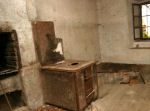Building-Related Illness (BRI) is a discrete, identifiable disease or illness that can be traced to a specific pollutant or source within a building. In contrast, the term Sick Building Syndrome (SBS) is used to describe situations in which building occupants experience acute health and comfort effects that appear to be linked to time spent in a building, but no specific illness or cause can be identified. Both syndromes are associated with immediate or potential health problems and are of particular concern as it is estimated that most people spend as much as 90% of their time indoors. It is indoors, where EPA studies have shown that the levels of pollutants may be 2-5 times, and occasionally, more than 100 times higher than outdoor levels.
The American Lung Association recently documented a decrease in motivation, performance and productivity among office workers and school children in relation to poor indoor air quality within buildings. Their evidence involving office workers suggests that when individuals experience only two symptoms of discomfort, they begin to perceive a reduction in their own performance. This perception increases as the number of symptoms increases, averaging 3% loss with 3 symptoms, and an 8% loss with 5 symptoms.
Identifying “Sick Buildings” can be difficult. Identifying the actual cause of the ‘sickness’ can be even more difficult. Molds are a good example of the problems encountered when attempting to identify the source of pollutants. They are present everywhere, both indoors and outdoors. Their effects on people are quite random, some experience extreme symptoms, while others have only minor reactions.
Those who suffer from asthma, hay fever or other allergies are at a particularly high risk. Below are a few symptoms to look for:
Building occupants complain of one or more of the following symptoms (ranging from mild to acute); headache; eye, nose or throat irritation; dry or itchy skin; dizziness and nausea; difficulty in concentrating; fatigue; and sensitivity to odors.
The cause of the symptoms is not obvious, i.e. a cold or flu.
The symptoms can linger for several weeks or more.
Most of the affected people experience relief after leaving the building.
If you or any of your employees are experiencing these symptoms then you should be suspicious of your building’s environment.




